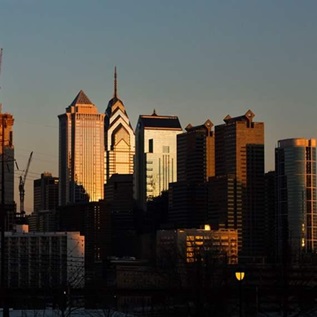Pew Fellowships in the Arts Announce the 2007 Award Recipients: Twelve $50,000 Fellowships Are Given to Philadelphia-Area Artists
- Charles Anderson choreography
- King Britt music composition
- Nicole Cousineau choreography
- Fritz Dietel craft
- Ed Bing Lee craft
- Gerald Levinson music composition
- Adelaide Paul craft
- Peter Paulsen music composition
- Jamey Robinson music composition
- Kate Watson-Wallace choreography
- Dorothy Wilkie choreography
- Julie York craft
The 2007 fellowships mark the 16th year of the Pew Fellowships in the Arts and brings the total amount that has gone to support some of the region's most gifted artists to $10.4 million. To date, 208 fellowships have been awarded and 213 artists who have been honored with the distinction of receiving the highly competitive fellowships. (Fellowships have been awarded to 3 collaborative teams over the years.)
"It is exciting to see so many first-time applicants receive a fellowship along with those who have established themselves as leading artists in our community," notes Pew Fellowships in the Arts Director, Melissa Franklin, "Once again these selections demonstrate the richness and vitality of the Philadelphia region and this year's fellowship recipients reflect the diversity and creative energy that make Philadelphia's artists community one of the most exciting in the country. Our support of these gifted individuals will be rewarded manyfold in the contributions they make to the cultural life of this community and in the variety of artistic experiences they bring to the broader Philadelphia public."
The fellowships are for a minimum of one year and a maximum of two years. They support artists at any stage of career development, from early to mature, and working in a wide variety of aesthetics and traditions. Fellowships are awarded on a competitive basis and selections are made through a two-phase peer-review process involving preliminary and final selection panels. For the recipients, this honor reflects both their distinction within the discipline-specific pool and the collective judgment of the final, interdisciplinary panel. This year's interdisciplinary panel included:
- Joseph V. Melillo (panel chair), executive producer, Brooklyn Academy of Music, N.Y.
- Tanya Aguiñiga, furniture and accessories designer and maker, Los Angeles, Calif.
- Michael Cain, pianist and composer, Brooklyn, N.Y. and professor of jazz studies and improvisation, New England Conservatory, Boston, Mass.
- David McFadden, chief curator and vice president for programs and collections, Museum of Arts and Design, New York, N.Y.
- Carla Peterson, artistic director, Dance Theater Workshop, New York, N.Y.
- Sixto Wagan, co-executive director and performing arts curator, DiverseWorks, Houston, Tex.
- Melinda Wagner, composer, Ridgewood, N.J.
Serving on the choreography panel were: Miguel Gutierrez, choreographer and artistic director, Miguel Gutierrez and the Powerful People, Brooklyn, N.Y.; Ishmael Houston-Jones, writer, curator, performer and coordinator, Lambent Fellowship in the Arts, New York, N.Y.; Carla Peterson, artistic director, Dance Theater Workshop, New York, N.Y. Serving on the Craft panel were: David McFadden, chief curator and vice president for programs and collections, Museum of Arts and Design, New York, N.Y.; Namita Gupta Wiggers, curator, Museum of Contemporary Craft, Portland, Ore.; Paula Owen, visual artist and president, Southwest School of Art & Craft, San Antonio, Tex. Serving on the Music Composition panel were: Michael Cain, pianist and composer, Brooklyn, N.Y. and professor of jazz studies and improvisation, New England Conservatory, Boston, Mass.; Michael Gordon, composer and co-artistic director, Bang on a Can, New York, N.Y.; Melinda Wagner, composer, Ridgewood, N.J.
"Our selection process is always extremely competitive and this year was not an exception," noted Franklin, "Our panelists labored with great seriousness and care to make the very difficult choices demanded by such a review process."











